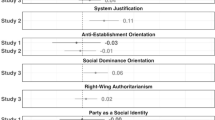Abstract
This paper examines whether Bratman’s succeeds in provides a reductive account of collective intention.
Similar content being viewed by others
Notes
(Bratman 2014). All parenthetical numbers refer to this book.
Many of the concerns voiced here are anticipated in the book; in many ways, this piece is further reflection on concerns that Bratman himself raises in the book.
Perhaps “We intend to ϕ” is the more basic locution. I’m not taking a stand on this issue.
See, for instance, (Searle 1990).
(Szabo Gendler 2008).
(106).
Similar things can be said, of course, about the other non-reductivist views.
Kutz’s notion participatory intention would be an example of a notion of an intention with an essentially collective content. See (Kutz 2000).
More on this below.
Bratman (10) quotes this example from (Petersson 2009).
Perhaps this need not be through the acquisition of a concept of joint activity. The child might simply acquire the concept of ‘ring-around-the-rosy’ or ‘this game.’
The subscript specify that this is the “because” proper to intentional explanations or that this explanation is given in response to the Anscombean “why” question.
This is Bratman’s own example.
It is worth noting that this is not a problem for Gilbert, for instance. The content in question would simply be the representation of something that essentially involves joint commitments.
At least not in the “basic cases”.
At least on Bratman’s own view.
I can’t dwell on this here, but I think the competing views can account for such a case.
References
Bratman, M. (2014). Shared agency. Oxford: Oxford University Press.
Gendler, T. S. (2008). Alief and belief. The Journal of Philosophy, 105(10), 634–663.
Gilbert, M. (1990). Walking together: A paradigmatic social phenomenon. Midwest Studies In Philosophy, 15(1), 1–14.
Gilbert, M. (2009). Shared intention and personal intention. Philosophical Studies, 144, 167–187.
Kutz, C. (2000). Acting together. Philosophy and Phenomenological Research, 61(1), 1–31.
Petersson, B. (2009). Collectivity and Circularity. In H.-B. Schmid, K. Schulte-Ostermann, & N. Psarros (Eds.), Concepts of sharedness—Essays on collective intentionality (pp. 145–164). Berlin: Ontos Verlag.
Searle, J. (1990). Collective Intentions and Actions. In P. Cohen, J. Morgan, & M. Pollack (Eds.), Intentions in communications (pp. 401–415). Cambridge: MIT Press.
Author information
Authors and Affiliations
Corresponding author
Rights and permissions
About this article
Cite this article
Tenenbaum, S. Representing collective agency. Philos Stud 172, 3379–3386 (2015). https://doi.org/10.1007/s11098-015-0564-4
Published:
Issue Date:
DOI: https://doi.org/10.1007/s11098-015-0564-4




